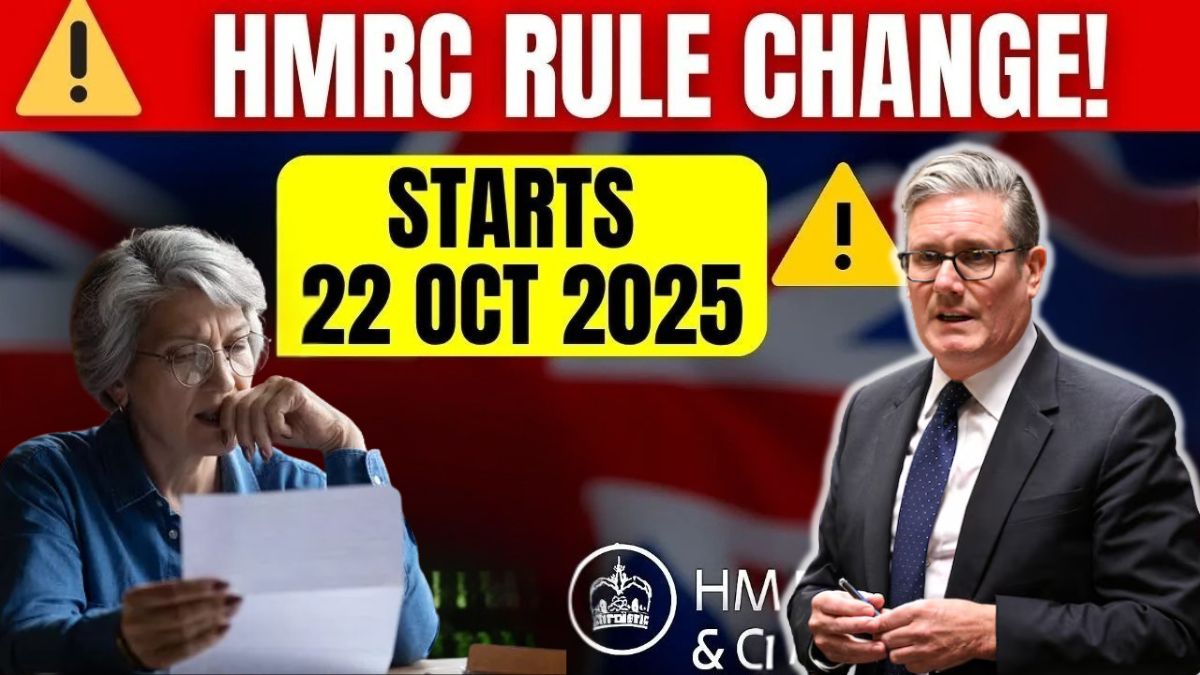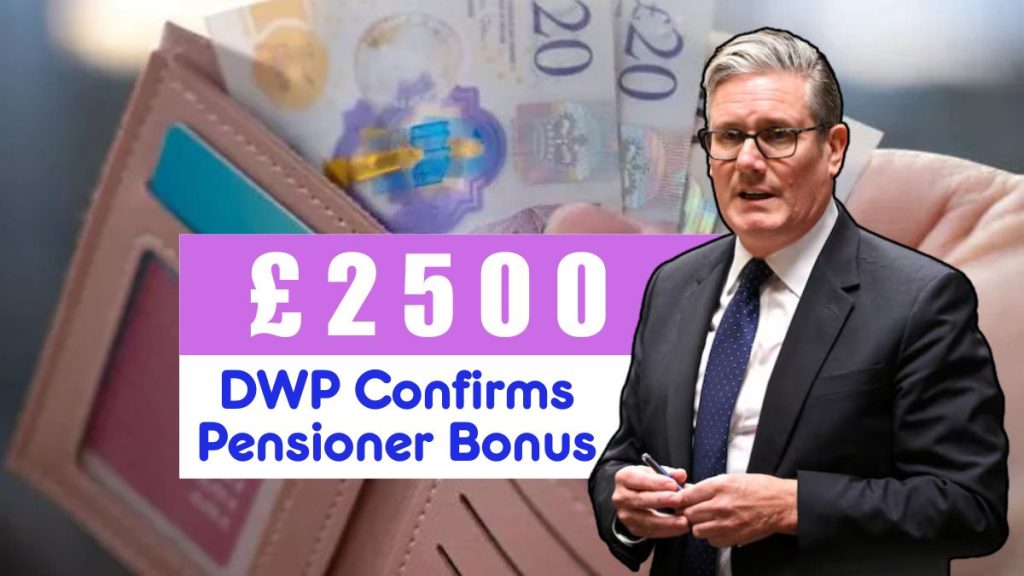The UK Government has officially announced a sweeping HMRC rule update, set to take effect on 22 October 2025, ushering in a new era of digital taxation and transparency. The change, confirmed by Her Majesty’s Revenue and Customs (HMRC) and supported by the Treasury, aims to make tax reporting faster, more accurate, and less prone to fraud or manual errors. The reform will affect millions of taxpayers, from self-employed workers and small businesses to pensioners and landlords, marking one of the most ambitious steps yet in the UK’s ongoing Making Tax Digital (MTD) programme.
Why the HMRC Rule Change Matters

The October 2025 reform is part of the government’s long-term goal to modernise the UK tax system. It seeks to create a seamless digital link between taxpayers and HMRC, reducing paperwork while enhancing compliance.
For decades, many individuals and businesses have relied on manual submissions, spreadsheets, or paper records, which often resulted in delayed refunds and reporting errors. With this new system, taxpayers will be expected to keep records digitally and submit quarterly updates through HMRC-approved software, allowing real-time calculations and faster processing of tax liabilities.
The Treasury describes the change as a “cornerstone in the digital transformation of Britain’s public finance system.”
What the New HMRC Rule Will Require
Starting from 22 October 2025, all eligible taxpayers will need to maintain and submit their financial data digitally. This new digital tax framework will:
- Mandate digital record-keeping for income, expenses, and savings.
- Require quarterly submissions instead of a single annual tax return.
- Use HMRC-recognised software (such as QuickBooks, Xero, or Sage) for filing.
- Provide real-time calculations showing estimated tax owed.
- Impose penalties for repeated late or incorrect filings.
The goal is to simplify compliance, reduce human error, and ensure HMRC receives up-to-date data across all income sources.
Who Will Be Affected by the 2025 HMRC Rule
The new framework will initially target specific taxpayer categories before expanding further in later years.
1. Self-Employed Individuals
Freelancers, contractors, and gig-economy workers will need to maintain digital logs of income and expenses, submitting quarterly summaries to HMRC.
2. Landlords
Those earning rental income will also have to switch to digital reporting. Even landlords with a single property will need to track income and deductions using approved software.
3. Small Businesses
Enterprises below the VAT threshold — historically exempt from digital reporting — will now be brought into the MTD fold. This ensures every small firm keeps standardised, transparent records.
4. Pensioners with Savings Income
Retirees who receive pension income alongside investment or savings returns will need to ensure their records are updated digitally and submitted regularly, particularly if their total income exceeds HMRC’s set threshold (to be confirmed before rollout).
Key Highlights of the New HMRC Rules
To make the transition clear for taxpayers, HMRC has summarised the main features of the new regime:
- Digital record-keeping becomes compulsory for eligible taxpayers.
- Quarterly submissions replace single annual returns for many.
- Real-time tax calculations will show updated liabilities.
- Automation reduces mistakes and manual calculations.
- Penalties and fines will apply for persistent non-compliance.
This streamlined structure is designed to eliminate delays in reporting, boost accuracy, and reduce opportunities for fraud and misreporting.
Why HMRC Is Making This Change
According to HMRC, the reform was necessary due to a sharp rise in errors and delays in manual tax submissions. Each year, billions of pounds in tax revenue are lost through inaccurate filings, missed deadlines, and outdated systems.
By switching to a fully digital model, HMRC aims to:
- Improve data accuracy and transparency.
- Prevent tax evasion and fraudulent claims.
- Provide taxpayers with instant clarity on what they owe.
- Reduce administrative strain on both HMRC and businesses.
This digital migration is part of the government’s Digital Britain Strategy, which prioritises automation, efficiency, and real-time information exchange across all public services.
How Taxpayers Can Prepare Before October 2025
With less than a year until the new framework begins, HMRC is urging taxpayers to start preparing early.
1. Check Your Eligibility
Determine if your income type or business size falls within the new reporting scope. HMRC will publish detailed criteria ahead of the launch.
2. Adopt HMRC-Approved Software
Choose recognised accounting software such as Xero, QuickBooks, FreeAgent, or Sage, which integrate directly with HMRC systems.
3. Keep Digital Records
Save invoices, receipts, and expense documents digitally rather than in paper form.
4. Learn the Quarterly Schedule
Understand the new quarterly submission deadlines to avoid penalties.
5. Seek Professional Advice
Consult a certified accountant or tax adviser to ensure compliance and avoid unnecessary errors.
These steps will help taxpayers transition smoothly once the new requirements become mandatory.
The Benefits of Going Digital
Although the change might seem challenging initially, the long-term benefits for UK taxpayers are significant.
Faster Refunds
Digital submissions allow HMRC to process data instantly, leading to quicker refunds for overpayments.
Reduced Errors
Automated calculations drastically lower the risk of manual mistakes and late filing penalties.
Transparency and Control
Real-time visibility gives taxpayers a clearer understanding of their finances throughout the year.
Less Paperwork
Storing and managing digital records means fewer lost receipts and less time sorting paper documentation.
Better Financial Management
Frequent reporting encourages smarter budgeting, regular tax planning, and smoother cash-flow management.
Impact on Small Businesses
Small and medium-sized enterprises (SMEs) are expected to experience the most direct effects.
While some may initially struggle with the transition, experts note that once adopted, digital compliance will simplify business operations. It will enable:
- Automated bookkeeping, reducing accounting costs.
- Clearer cash-flow visibility throughout the year.
- Accurate forecasting using real-time financial data.
- Improved access to credit, as lenders can easily verify records.
In the long run, this could make small businesses more resilient and better equipped to handle economic shifts.
HMRC’s Support and Assistance Plan
To ease the rollout, HMRC will provide multiple layers of support ahead of the October 2025 start date.
Training and Tutorials
Free online webinars, video guides, and step-by-step walkthroughs will help individuals and businesses understand the new system.
Customer Helplines
Dedicated helplines will be available to answer MTD-related queries and guide taxpayers through setup issues.
Software Guidance
HMRC will publish an updated list of approved accounting platforms that meet security and reporting standards.
Partnerships with Software Providers
The government is collaborating with leading digital-accounting firms to offer low-cost or free access to essential tools for small or low-income taxpayers.
These initiatives are designed to make compliance as straightforward as possible and ensure that no one is left behind in the digital transition.
Common Questions About the 2025 HMRC Update
1. Will the new rule apply to all taxpayers?
No. The first phase targets self-employed individuals and landlords above an income threshold, which HMRC will confirm closer to October 2025. Broader rollout will follow later.
2. What if I have no experience with digital accounting?
HMRC will provide training and guidance, and most recognised software uses beginner-friendly interfaces designed for non-technical users.
3. Will penalties apply immediately after launch?
There will be a short grace period for first-time users to adapt. However, consistent late submissions or missing data will result in financial penalties.
4. How will pensioners be affected?
Pensioners with savings or investment income above a specified threshold may need to provide digital updates. Most standard pension payments will continue to be handled automatically by HMRC.
5. Can I still file on paper?
Paper submissions will only be accepted for exceptional cases, such as disability or lack of reliable internet access, and must be formally approved by HMRC.
The Bigger Picture: A Step Toward a Fully Digital Tax Future
The October 2025 rule change represents more than an administrative adjustment — it’s a transformation in how the UK collects and manages tax data.
By integrating real-time digital reporting, HMRC aims to create a transparent and efficient tax ecosystem that benefits both the government and taxpayers.
Financial analysts predict that, once fully implemented, the system will reduce the UK’s tax gap by billions each year, improving public finances without increasing rates.
In the long term, it could also pave the way for additional features such as AI-driven error detection, automatic reminders, and instant online payment portals, ensuring the UK remains at the forefront of global tax innovation.
FAQs
1. What is the main purpose of the 22 October 2025 HMRC rule?
To improve tax accuracy, reduce fraud, and make digital record-keeping mandatory for eligible taxpayers under the Making Tax Digital initiative.
2. Who must comply with the rule?
Initially, self-employed individuals, landlords, and small businesses. Over time, it will extend to more taxpayers.
3. What happens if I fail to use digital records?
After an initial grace period, non-compliance or late submissions will result in penalties and possible audits.
4. How can I prepare before October 2025?
Select HMRC-approved software, digitise all records, and seek advice from a tax professional to understand new quarterly deadlines.
5. Will this change affect PAYE employees?
Most PAYE employees won’t need to act — their taxes will continue to be handled automatically by their employers and HMRC systems.


















